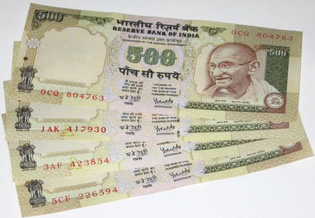
Introduction |
Geography |
History |
Communication |
Beliefs |
Society |
Economy |
Government |
Technology |
Links to Other Websites |
 |
 |
Economy |
|
The earliest people in India were hunters and gatherers. They followed the herds of animals that they hunted which means they were nomads having no settled home. They gathered nuts, berries, roots or tubers, and other parts of plants to add to their meals.
In the high Himalaya Mountains, you find the yak. It survives best above 10,000 feet because its lungs are large to take in the extra oxygen needed at higher elevations. Yaks are used rather than killed, usually, because they can carry heavy loads for trading. Dzomo are a cross between a yak father and a cow mother. These animals are easier to raise in herds and provide milk to make butter and cheese which are staple foods of Himalayan herders. Since so many mammals like the musk deer, snow leopard, and tiger have been killed for their skins and useful parts, the government of India has banned their killing. Poachers still get away with illegal hunting, however, so these animals are on the endangered species list.
Before the winter snows came, both the herds of animals and the people moved to the lower mid-hill region or even to the plains or tarai of India. They would fish and add seafood to their diet in the summer if they settled along the river or near the coast. They used or saved what they hunted, but would trade with other nomads, items they had made .
Some people settled more permanently along the Indus River and began to farm the land and domesticate animals. Archaeologists know that some of the crops these early people grew were wheat, barley, rice, peas, melons, and dates. They also pressed oil from sesame seeds. These people first learned to domesticate wild fowl or the ancestors of chickens. They also raised sheep and had buffaloes, goats, bulls, and elephants.
As the Indus River Valley civilization developed, the cities of Mohenjo Daro, Harappa, and the 100 cities found in the region became known as centers of trade as well. Items made there have been found as far away as Egypt and Mesopotamia and in China and many artifacts from Sumer, Babylon and Egyptian cities have been discovered at Indus Valley archaeological sites. The Harappans were the world's first people to grow cotton and to weave it into cloth. This was a major traded item and India is still known for its colorful cottons today. They also made brilliantly decorated pottery, figurines, and toys. Archaeologists have found terra cotta dancing girls and toys including animals with jiggling heads and tiny ox carts pulled by strings.
Archaeologists have found seals that were used by merchants to list the contents of their package or perhaps to identify the owner of the items. The Indus River Valley language has still not been decoded so archaeologists don’t know for sure what the seals mean.
Today in modern India you can buy almost anything you need in the bazaars. Some are large-scale shops and some are very small such as individuals selling things from a blanket on the street. Some of the things you can bargain for in the bazaars are dolls, jewelry, paintings, bronzes, woven napkins, bedspreads, shawls and dresses, rugs, lacquer-ware, embroideries,
stone or ivory or wood carvings, cane furniture, brassware, brocades, pottery, and batiks.
People have jobs like in any major city in the world from taxi cab drivers to barbers and accountants to zoo keepers. Most Indians, however, still live in very rural places and make their living by farming or fishing. India is the second largest producer of rice in the world. Groundnut is the major oil seed crop and grapes, maize, and sugarcane are other important crops.
The monetary unit in India is called the rupee. 100 paise (pie-suh) equals 1 rupee. In American money $1.00 equals about 50 rupees. This often changes depending on the current market value of money in India and in the United States, but generally, 1 rupee equals about 2 cents. How much is this worth in American money?
